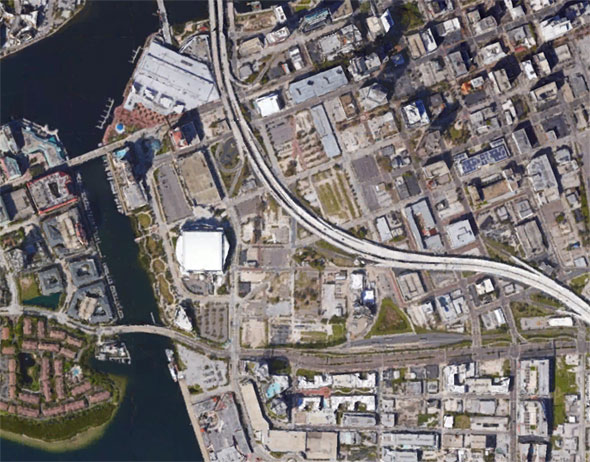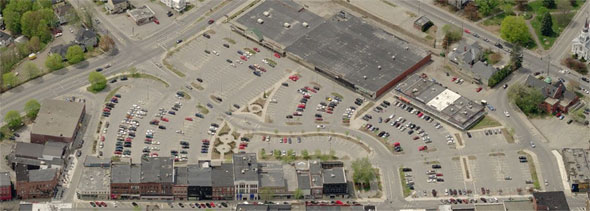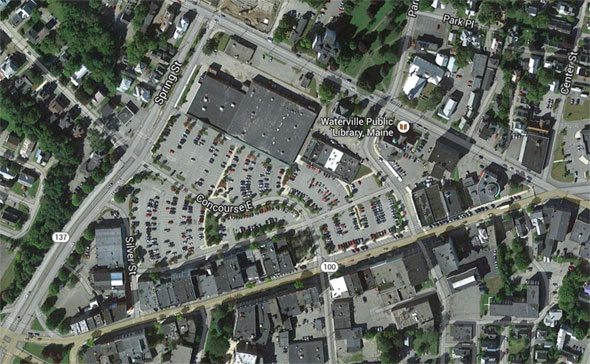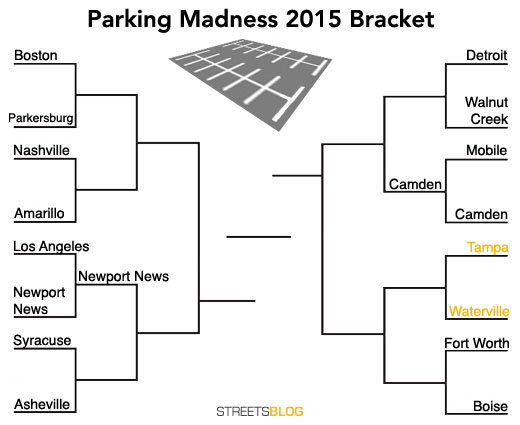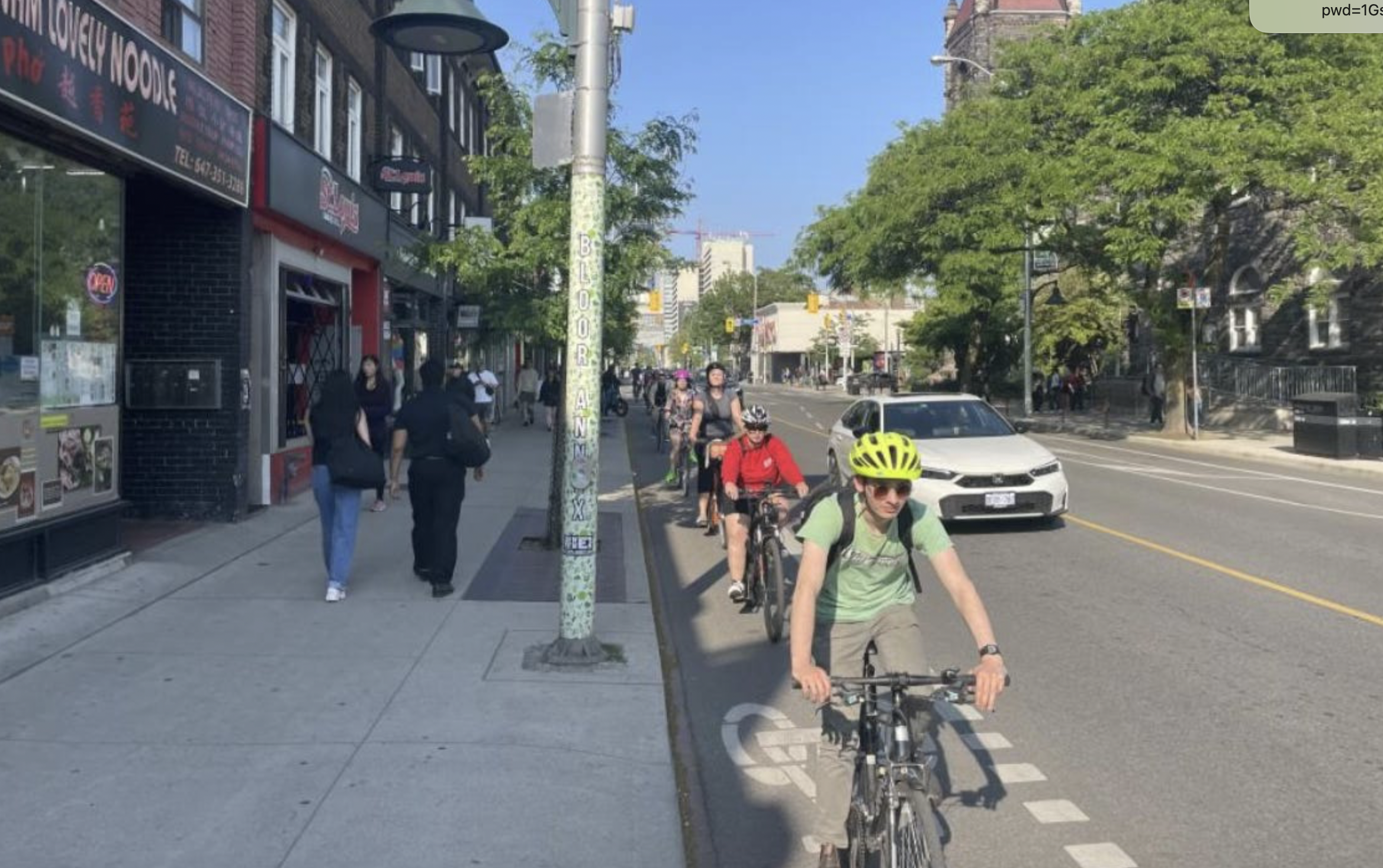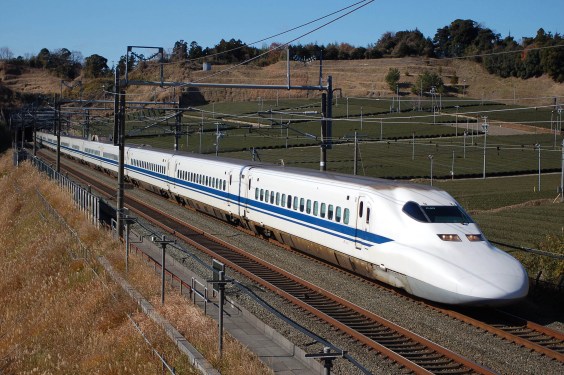So far in round one of this year's Parking Madness tourney, the parking crater in downtown Newport News, Virginia, knocked off the surface parking right by L.A.'s North Hollywood metro station, and the parking-scarred waterfront of Camden, New Jersey, beat out downtown Mobile and its carpet of parking lots.
Today's matchup pits sunny Tampa, Florida, against little Waterville, Maine. The scale of the damage may be different, but both cities have committed mortal sins against their urban areas that require some explaining.
Tampa
This entry comes to us via Joshua Redman, who writes:
This area is adjacent to both the Tampa Bay Times Forum (where the Lightning play) and the middle of downtown. Aside from the sea of designated parking lots, the empty lots in the bottom left of the picture are used as overflow parking during games. There is almost NO lighting and sidewalks.
Outside the picture to the left is Harbour Island, an island with million dollar condos and a beautiful riverwalk. Outside the picture at the bottom is the Channelside district, a new district of mixed use condos and retail, very walkable. And to the top and right is the central business district. This crater separates the three areas and is a pedestrian wasteland.
Sounds like Tampa really deserves some public shaming for this crime against urbanity. Here's the straight shot of all the highway- and stadium-inflicted damage:
Now meet the competition...
Waterville, Maine
This entry was submitted by Bill Basford, who explains:
This parking crater is in the heart of Waterville, Maine, and it is called "The Concourse," apparently in an attempt to gloss over the damage to the city. Waterville is a small city with a population of only 15,800 for the city itself, and perhaps 40,000 for the greater Waterville area. This crater has over 600 parking spaces, not counting those along adjacent streets, on roughly 6 acres of land, including the access roads. This crater dates from about 1970, when Urban Removal came to Waterville, which means the economic damage from this crater has continued for about 45 years.
What makes this parking crater so special? I see at least five problems with this parking crater. First, not only is this crater unusually large for a small city, it is located in the heart of the city, on what should be the most valuable land in the whole Waterville area. Second, this crater is entirely city owned, which means the city receives no tax revenue from this valuable land, and other taxpayers have to make up the difference. Third, because it is all free parking, including the area designated for all-day parking, the city collects no parking revenue from this crater. Fourth, because it is city owned, and in Maine, where we have long, cold, snowy winters, the city pays the entire cost of snow removal each winter. And fifth, here in Maine, where most of a city's revenue comes from property taxes, much of the cost for snow removal and other expenses, including lighting, falls on homeowners, including those who own cars but rarely use this parking crater, and a significant number of low-income people who don't even own cars.
What say you, readers -- can Waterville make up for its size disadvantage with those epic policy blunders? Vote below.

